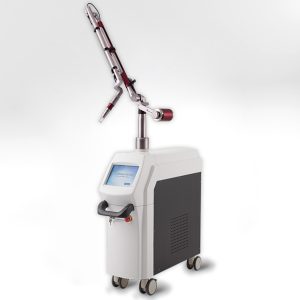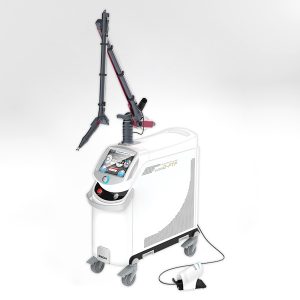Tattoo Removal:
Since ancient times, tattooing has been very popular. Reminding a memory, believing in a symbol, and even covering up a burn mark are some of the reasons for tattooing. Tattoo is a permanent design on the skin. it is done in specialized beauty clinics. The specialist injects the tattoo ink into the second layer of skin through a special needle.
Until a few years ago, tattoos seemed to be permanent and there was no way to get rid of them. Some beauticians and tattoo artists, using same-color materials, temporarily covered the tattoo, while others suggested chemical peeling, cryosurgery, and some other surgeries. None of these methods can completely remove the tattoo and be effective enough. Research shows that at least 28% of people in the United States regret their tattoo in the first month and are looking for a way to get rid of it.
What is the fastest and safest way to get rid of a tattoo?
There are several ways to remove tattoos, which are compared below.
Laser
Tattoo removal with laser is non-invasive because no injuries or peels are done on the skin. The laser breaks down the pigments under the skin and does not cause much damage to the surrounding cells. Lasers are the best way to remove tattoos by specifically absorbing tattoo pigments.
In laser tattoo removal, the surgeon or dermatologist will talk to you first and, after reviewing your medical history, will give you information such as the number of sessions needed to remove the tattoo. Before removing the tattoo with a laser, the tattooed area is anesthetized with a special gel. After that, the doctor selects the type of Q-switch laser according to the color of the tattoo.
Today, Q-switch lasers are the best way to remove tattoos because of their less complication and high efficacy. In this method, the laser pulse is applied to the skin in a short time. By emitting a Q-switch laser beam that lasts one billionth of a second, the tattoo color turns into small particles, and after a few sessions, these color particles are digested by the immune system. The Q-switch laser is not only used to remove tattoos but also to remove various skin blemishes and rejuvenates the skin.
Because laser tattoo removal is a type of cosmetic surgery, it does not include insurance. Laser tattoo removal is not recommended for pregnant and lactating women and people suffering from weak immune systems.
RF surgical
In this method, the tattooed area is surgically removed and the two edges of the skin are sutured together to heal the wound. The effectiveness of this method depends completely on the surgeon’s skill and of course the size of the tattoo area. The main complication of this procedure, despite all the care, is the scarring and extra flesh on the skin. The wound needs a long recovery period to fully heal with this method.
Dermabrasion, an effective method but full of complications:
In dermabrasion, the skin of the tattooed area is sanded using a special instrument. This treatment has many side effects, the main of which is hyperpigmentation and dark spots falling on the area where the tattoo was sanded. Infection of the tattoo area, incomplete removal of the tattoo, and scarring are other side effects of the dermabrasion method.
What factors determine the number of laser tattoo removal sessions?
Laser tattoo removal is not completed in one session, and the patient must complete a 2-3-day recovery period after each session. The number of sessions of tattoo removal using Q-switch laser depends on the age, colors, size, and location of the tattoo. The skin type and color and the amount of pigment that penetrated the skin are also important factors.
Removal of small and monochromatic tattoos with Q-switch laser requires fewer treatment sessions than large, multicolored ones.
Important Care Tips Before and After Tattoo removal with Laser:
- Until a few weeks before the laser session, avoid exposure to intense sunlight as well as tanning.
- Shave the area one day before laser therapy.
- Remove any cosmetics from the tattoo area.
- After each session, use a cold compress several times a day to prevent or reduce swelling and pain.
- In the first days after the session, carefully take care of the treated area and reduce its redness using special ointments. Avoid scratching and touching the treated area
- Avoid swimming and lying in the hot bathtub until the wound is completely healed.
- If you see any blisters, infections, and pimples on the laser area, see a doctor immediately.
Do you have any questions about tattoo removal? Ask AFA specialists:
Tattoo removal was very painful and ineffective until a few years ago. But the incredible advancement of specialized medical instruments has made it easy to remove tattoos using various methods. In this article, we reviewed different ways of tattoo removal. If you still have any questions or concerns about tattoo removal, write below. Aftab Forouzan Aria experts will answer them.



